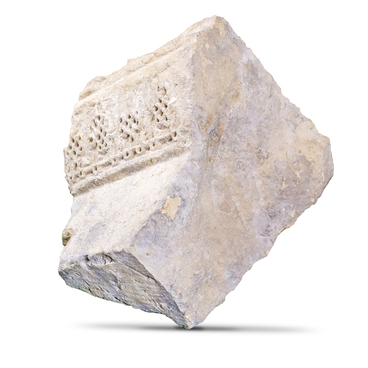In ancient times, belts or separate strings were used for clothes strapping. The first buttons served rather as ornaments for dressy clothes than for fastening. The oldest known button sample was found in Asia, in the Indus River-Valley. Scientists stated that it dated back to about five thousand years. This ancient sample was made based on the river shells nacre with a hole for sewing on.
The first bronze buttons have been found in China. They dated back to the second millennium BC. Functional buttons made of stone have been found in Göbekli Tepe, southeast of Turkey. They became available nearly 500 years later.
In historians' opinion, the buttons were widely used in the East for the first time. Animal bones and horns were the basic material for their production. It was not until the beginning of the 13th century, the fashion for buttons began to promote throughout Europe. Their production started in foundries, blacksmiths, and jewelry workshops as well.
In the 13th century, tight clothes with many buttons became en vogue. They developed from a necessity to a luxury article. These fashionable buttons featured the wealth of their owner. Golden, silver, and ivory buttons symbolized a high position in society.
In Russia, these items were attributed magical value. It is mentioned in Vladimir Dahl’s dictionary “a button is a scarecrow”. The button was a kind of amulet that should frighten away enemies. The button was a kind of amulet that should frighten away enemies. It was hollow-type with pellets, tin pieces, or small rocks placed inside. When in motion, they produce a sound resembling a muffled peal of a little bell. Researchers spoke about 40 different types of buttons that could have been found in Russia. They were distinct in material, shape, and production technique. Most typically, the buttons were sewn on caftans, and later on any rank official uniforms.
A button from the Bolgar Museum-Reserve collection has the form of a disc with a hole in the center. Its front face is brown and decorated with two bands of a circular ornament.
The first bronze buttons have been found in China. They dated back to the second millennium BC. Functional buttons made of stone have been found in Göbekli Tepe, southeast of Turkey. They became available nearly 500 years later.
In historians' opinion, the buttons were widely used in the East for the first time. Animal bones and horns were the basic material for their production. It was not until the beginning of the 13th century, the fashion for buttons began to promote throughout Europe. Their production started in foundries, blacksmiths, and jewelry workshops as well.
In the 13th century, tight clothes with many buttons became en vogue. They developed from a necessity to a luxury article. These fashionable buttons featured the wealth of their owner. Golden, silver, and ivory buttons symbolized a high position in society.
In Russia, these items were attributed magical value. It is mentioned in Vladimir Dahl’s dictionary “a button is a scarecrow”. The button was a kind of amulet that should frighten away enemies. The button was a kind of amulet that should frighten away enemies. It was hollow-type with pellets, tin pieces, or small rocks placed inside. When in motion, they produce a sound resembling a muffled peal of a little bell. Researchers spoke about 40 different types of buttons that could have been found in Russia. They were distinct in material, shape, and production technique. Most typically, the buttons were sewn on caftans, and later on any rank official uniforms.
A button from the Bolgar Museum-Reserve collection has the form of a disc with a hole in the center. Its front face is brown and decorated with two bands of a circular ornament.



